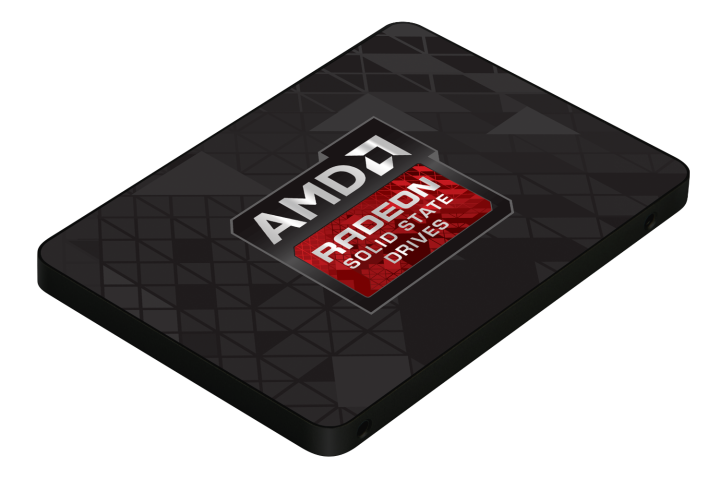
Related: SSDs vs. mechanical hard drives vs. hybrid drives, what’s the best fit for you?
The Radeon R7 SSDs are styled in the way that stock-model AMD graphics cards are, wearing an amalgamation of black, and just a little bit of red. If you’ve ever seen a stock version of an AMD graphics card, just take that visual theme, and plop it onto an SSD. That’s what the Radeon R7 SSDs look like. The Radeon name is typically used to describe the company’s gaming and graphics-oriented hardware, so this is a bit of a departure for AMD from a naming standpoint.
Powered by Toshiba’s A19 MLC NAND flash process and a Barefoot 3 M00 controller, AMD’s Radeon R7 SSDs will read and write data at speeds which vary from one model to the next. The R7 drives comes in three capacities: 120GB, 240GB, and 480GB. The 120GB unit reads and writes data at speeds of 550MBps, and 470MBps, respectively. The 240GB and 480GB R7 drives read at the same speed as the 120GB flavor, but they both sport a speedier write speed of 530MBps.
Related: How to install an SSD in your laptop
The AMD Radeon R7 SSDs start at $99.99 for the 120GB unit. That’s a bit more expensive than SanDisk’s new Ultra II drives, which will be out next month. The 120GB model of that line costs $79.99; a difference of $20.



